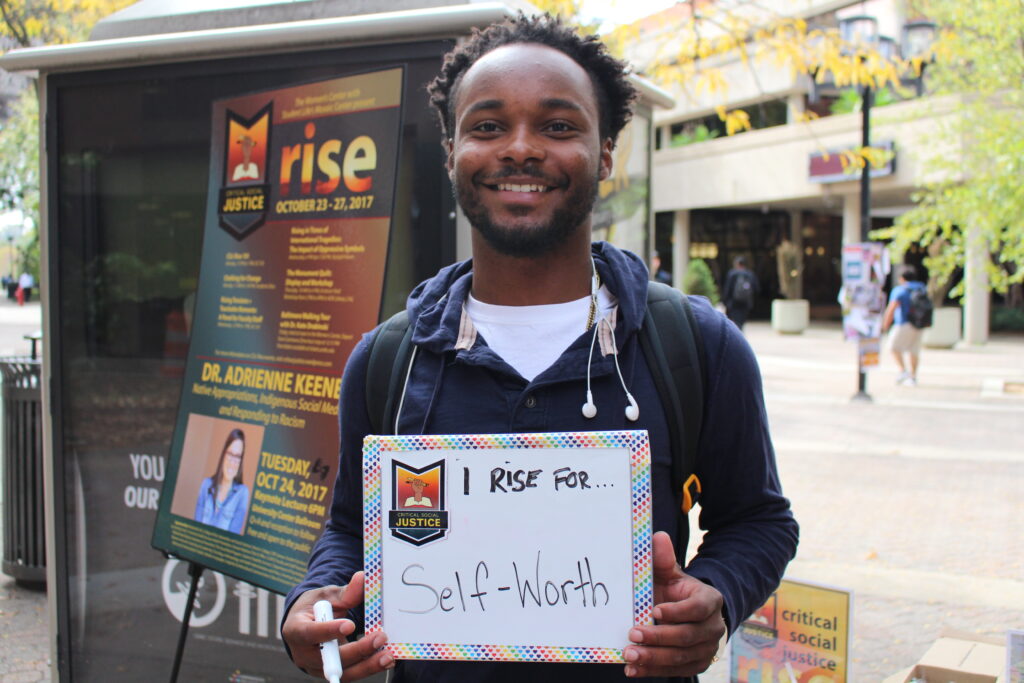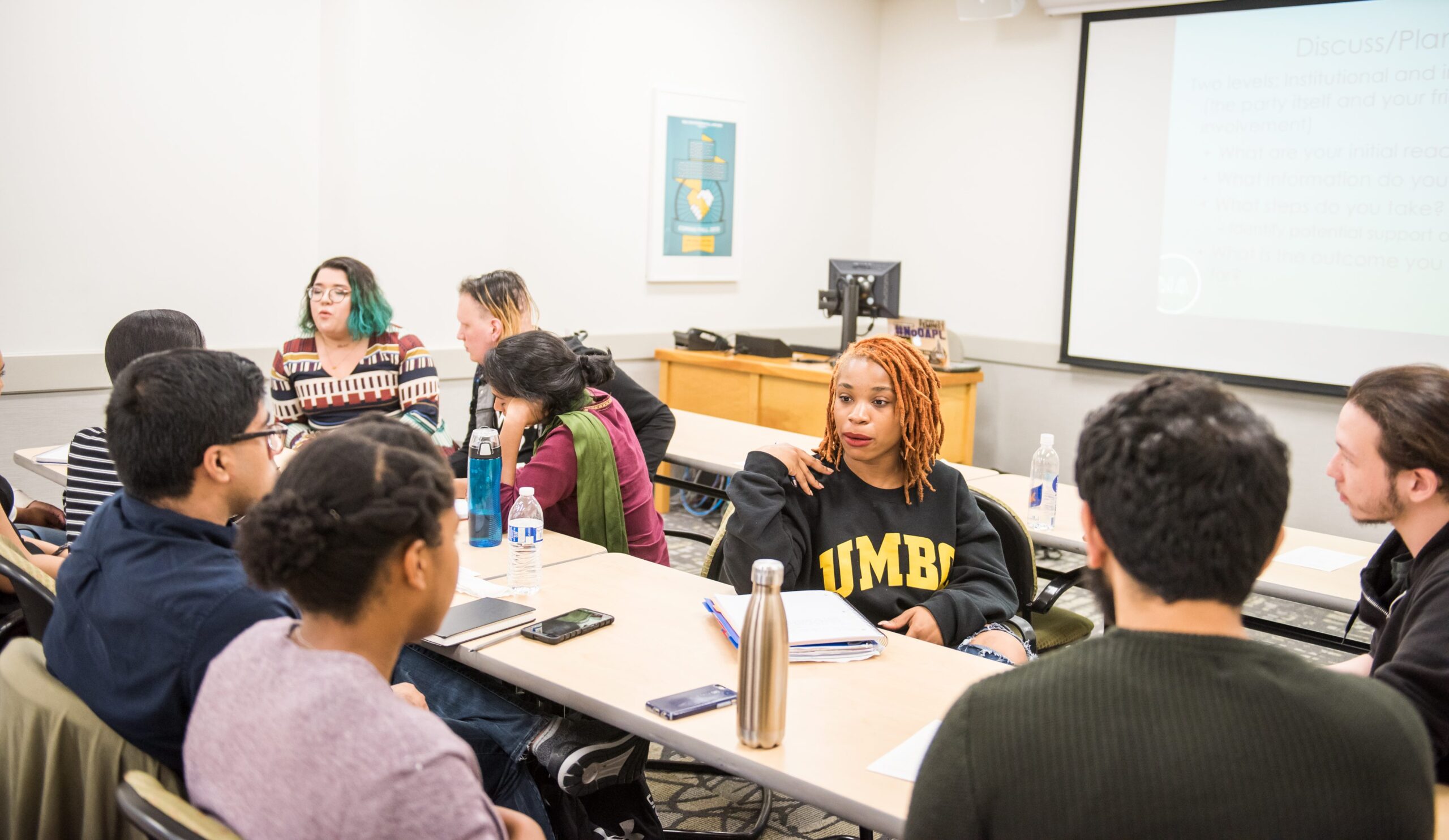Critical Social Justice (CSJ): Rise began outside the confines of a lecture hall last week, bringing the mission directly to the streets of UMBC. During the kickoff event, Chalking for Change, students answered the question “What do you rise for?” with familiar words – equality, inclusion, respect, tolerance, and other personal credos – that told a visual story of empowerment spanning Academic Row.
Now in its fifth year, CSJ is designed to encourage the public to think more closely about Critical Social Justice. Sponsored by the Women’s Center, The Mosaic Center for Culture and Diversity, and 18 additional co-sponsors, the week-long series offers a range of opportunities to explore individual and collaborative instances of resistance and resilience.
“Our attempt was to flip the script since these types of events are usually panels of speakers telling you what to think,” explains Jess Myers, director of The Women’s Center. “We wanted to use Chalking for Change as a way to allow for more dialogue and to break down the hierarchy of who gets to talk about what they care about and what they’re rising for.”

One of the most compelling events of the week was speaker Adrienne Keene’s keynote lecture, “Native Appropriations, Indigenous Social Media, and Responding to Racism.” Keene opened her dynamic speech by displaying the results of a web image search for the term “Native American.” The search yielded repetitive images of historic photos or paintings that predominantly featured men bedecked in war regalia.
“There are 567 different federally recognized tribes and hundreds more state-recognized and non-federally recognized tribes, and each of those tribes has their own culture, their own regalia, their own language, their own history, their own government and that vast diversity and complexity is nowhere in this set of images,” Keene said in reference to the largely uniform results.
The Native scholar and activist addressed a standing-room-only audience about the ramifications of appropriating Native culture for entertainment purposes, in everything from runway fashion to athletic mascots. As a citizen of the Cherokee Nation, Keene stressed, “If I’m standing up here saying these are the things that make me a Cherokee woman, and you can go and buy all of those things at Target and Urban Outfitters, it starts to erode that ability for me to say those cultural markers make me who I am.”
In closing, Keene left the audience with a charge, saying, “UMBC really prides itself on being one of the most diverse campuses in the country and that’s amazing, but I want you to really think about what that means if it doesn’t include the original inhabitants of this land.”
During CSJ, The Women’s Center also invited survivors and secondary survivors to a quilt making workshop to create pieces for addition to the Monument Quilt, a public demonstration of stories from sexual violence survivors and their loved ones and supporters. The ultimate goal of the Monument Quilt is to blanket the National Mall with 6,000 squares that will spell out “Not Alone.” Moderators also used this time to address the #MeToo movement on social media, and gave many individuals the opportunity to speak about it in person for the first time.
The week culminated in the annual Baltimore Walking Tour with Kate Drabinski, senior lecturer in gender and women’s studies. Participants started their walk at the corner of Martin Luther King Boulevard and Pratt Street and continued to the Inner Harbor, stopping at various sites of resistance and resilience along the way. The tour focused heavily on transit and the effects it has on shaping communities.
“It’s really important for CSJ to not just be these ivory tower conversations. We have to be thinking about the ways that we do social justice as an institution and as a community within Baltimore,” Myers explained. “What’s important to remember about Critical Social Justice is that it’s not just supposed to be five days. What we really hope is that it can create springboards or open doors for people to think about Critical Social Justice all the time.”
To learn more about Critical Social Justice, visit the Critical Social Justice blog.
Banner image: Members of the UMBC community share their input during a workshop facilitated by Adrienne Keene. Photo by Marlayna Demond ’11 for UMBC. Additional photos provided by UMBC Women’s Center.
Tags: CAHSS, WomensCenter

